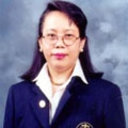Anti-acne-inducing bacterial activity of mangosteen fruit rind extracts.
Maneno muhimu
Kikemikali
OBJECTIVE
The aims of this study were to determine the most effective solvent extract of mangosteen, anti-acne- inducing bacterial activity and the amount of alpha-mangostin, a major active component in each mangosteen fruit rind extract, using high-performance liquid chromatography (HPLC).
METHODS
The fruit rinds of mangosteen were extracted with hexane, dichloromethane, ethanol and water. The extracts were tested for antibacterial activity against bacteria that induce acne, including Propionibacterium acnes and Staphylococcus epidermidis. Thin-layer chromatographic autobiography against these bacteria was also performed for each extract, while the alpha-mangostin content was analyzed using a validated HPLC method.
RESULTS
The dichloromethane extract exhibited the strongest antibacterial effect with minimum inhibitory concentration values for both bacterial species at 3.91 microg/ml, while the minimum bactericidal concentration values against P. acnes and S. epidermidis were 3.91 and 15.63 microg/ml, respectively. Thin-layer chromatographic autobiography indicated that alpha-mangostin was present in all extracts, except the water extract, and is a major active component against both P. acnes and S. epidermidis. Using HPLC, the dichloromethane extract yielded the highest content (46.21% w/w) of alpha-mangostin followed by the ethanol extract (18.03% w/w), the hexane extract (17.21% w/w) and the water extract (0.54% w/w).
CONCLUSIONS
Dichloromethane extract exhibited the strongest anti-acne-inducing bacterial effect and this extract yielded the highest amount of alpha-mangostin.


